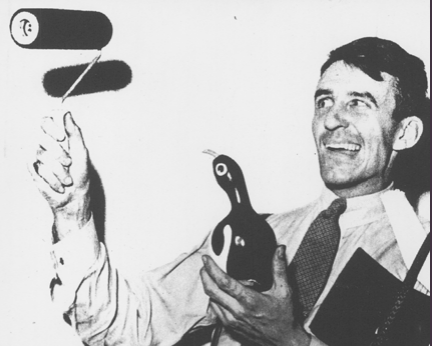
A Global Leader That Sets Its Own Prices
Beating the Market with Brand Power
Welcome to Porter & Co.! If you’re new here, thank you for joining us… and we look forward to getting to know you better. You can email your personal concierge, Lance, at this address, with any questions you might have about your subscription… The Big Secret on Wall Street… how to navigate our website… or anything else. You can also email our “Mailbag” address at any time: [email protected].
At the end of this issue, you’ll find our model portfolio and watchlist (which is also here) — as well as a “Best Buys” section, where we’ll briefly cover three portfolio names that we think you should consider buying first.
In addition to hosting The Big Secret on our website, it is also available as a downloadable PDF. Click here to download the full report.
Again… we’re excited that you’re with us…and we’re looking forward to a long and fulfilling relationship.
If you’re not a member and would like to learn more, click here.
Everyone knows the story of the invention of the telephone… right?
In December 1874, science teacher Elisha Grey – who had already created the first electronic keyboard synthesizer – had a brand-new musical brainstorm.
Before a spellbound audience at the First Presbyterian Church in Highland Park, Illinois, Elisha demonstrated a “Musical Telegraph” that transmitted “familiar melodies through telegraph wire.”
But he had an even more exciting idea up his sleeve: a mechanism to send the human voice down a wire.
Working in secret – since his patron, a wealthy tycoon, disapproved of such flighty notions – Elisha perfected his “vocal telegraph” over the next two years. On Valentine’s Day, 1876, he filed a “caveat,” or advance notice of patent, with the U.S. Patent Office.
The rest is history.
Wait, you say – that’s not how the story goes…
What about Alexander Graham Bell, whose work with the deaf famously inspired him to experiment with the physics of sound? Don’t history books record the words of Bell’s first-ever phone call to his assistant: “Mr. Watson, come here; I want to see you”?
We credit the multitalented Scotsman as the inventor of the telephone. But it’s only because Alexander Graham Bell got to the patent office first… just three hours before Elisha Grey.
The two men had been separately developing a working telephone for years… Grey in Illinois, Bell in Boston. (Bad blood ran high between them, and some say Bell ripped off parts of Grey’s invention.)
And we can’t forget the Italian inventor of the telephone. Antonio Meucci had filed his own announcement with the patent office back in 1871, though cash flow problems prevented him from beating the other two to the punch.
How three people – working independently – invented the telephone at the same time is a mystery of science. So is why Isaac Newton and Gottfried Leibniz separately discovered calculus in the 1600s. And why, in 1869, Louis Ducos du Hauron and Charles Cros both pioneered the first version of color photography… each presenting their findings independently on the same day.
Maybe there’s something to spooky “mass consciousness” theories, like Indra’s net. But so far, there’s no rational explanation for parallel inventions. It just… happens. As the renowned cultural anthropologist Alfred Kroeber once commented, “The whole history of inventions is one endless chain of parallel instances.”
In every case, though, history books record the person who “got there first.” And often, that means nipping under the wire and filing a patent before a rival.
Take the paint roller, for instance…
The original tool – familiar to home improvement mavens everywhere – was the brainchild of Norman Breakey, a Canadian living in Toronto in 1940. He was tired of painting houses with a brush, so he literally “invented the wheel.”
Breakey saw the huge opportunity in his revolutionary new product, but he didn’t have the money to commercialize the idea, and had trouble raising money from investors.
And… his biggest mistake… he didn’t file a patent.
Richard Croxton Adams, though, did.
In the early 1940s, Adams was an engineer at America’s leading paint manufacturer. He’d been tasked to come up with a paint brush alternative, since pig bristles – the key part of the paint brush – were rationed during wartime. Adams tinkered away at his basement workbench, and after a while came up with a rudimentary version of Breakey’s device – a rotating cylinder covered in a splice of carpeting, attached to a wooden handle.
Backed up by the budget of a major corporation generating $100 million in sales each year, Adams commercialized the product that became known as the “Roller-Koater” in late 1941. Adams’ “parallel invention” sold for 89 cents – and crucially, his employer secured the product with a patent.
As the war ended and America enjoyed a post-war baby boom, the Roller-Koater became a staple for millions of households that flocked to the suburbs and consumed record amounts of paint to decorate their new homes. Here’s Richard Adams gleefully examining his Roller-Koater product that would change the way America, and the world, applied paint. (Why he’s holding a toy penguin is lost to history.)

To this day, Adams’ employer – a household brand – is credited with “inventing the paint roller.” And Norman Breakey, the original Canadian inventor, died penniless and in obscurity, after failing to capitalize on a brilliant idea that’s now become an industry standard.
Smart decisions beget more smart decisions. The company that commercialized the paint roller went on to become one of the longest-running success stories in the history of American business.
The Birth of a 156-Year Old Brand
This content is only available for paid members.
If you are interested in joining Porter & Co. either click the button below now or call our Customer Care team at 888-610-8895.